PROXIMANOVA-LIGHT.OTF PROXIMANOVA-LIGHTIT.OTF PROXIMANOVA-EXTRABLD.OTF PROXIMANOVA-BOLD.OTFPROXIMANOVA-BLACK.OTF
Get this font in here!
This Article Applies to:
- Avast Business Hub
The data backed up using the Cloud Backup service is stored on the Cloud Backup dashboard (cloudbackup.avast.com). The dashboard provides multiple backup management options such as restoring, sharing, and deleting backed up files, as well as some additional features like backup analytics, monitoring, or cleanup.
It is not possible to view multiple devices at once inside the dashboard, only individual devices.
Accessing Cloud Backup Dashboard
To access a device's Cloud Backup dashboard from the Hub:
- Open the Devices page
- Click the three dots next to the desired device
- In the drop-down menu, hover over Cloud Backup, then select View data and restore
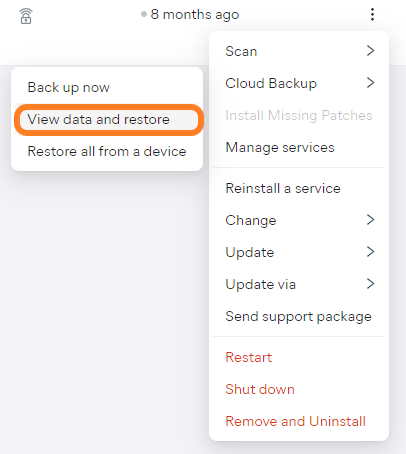
The dashboard's Cloud Data section will open in a new browser tab.
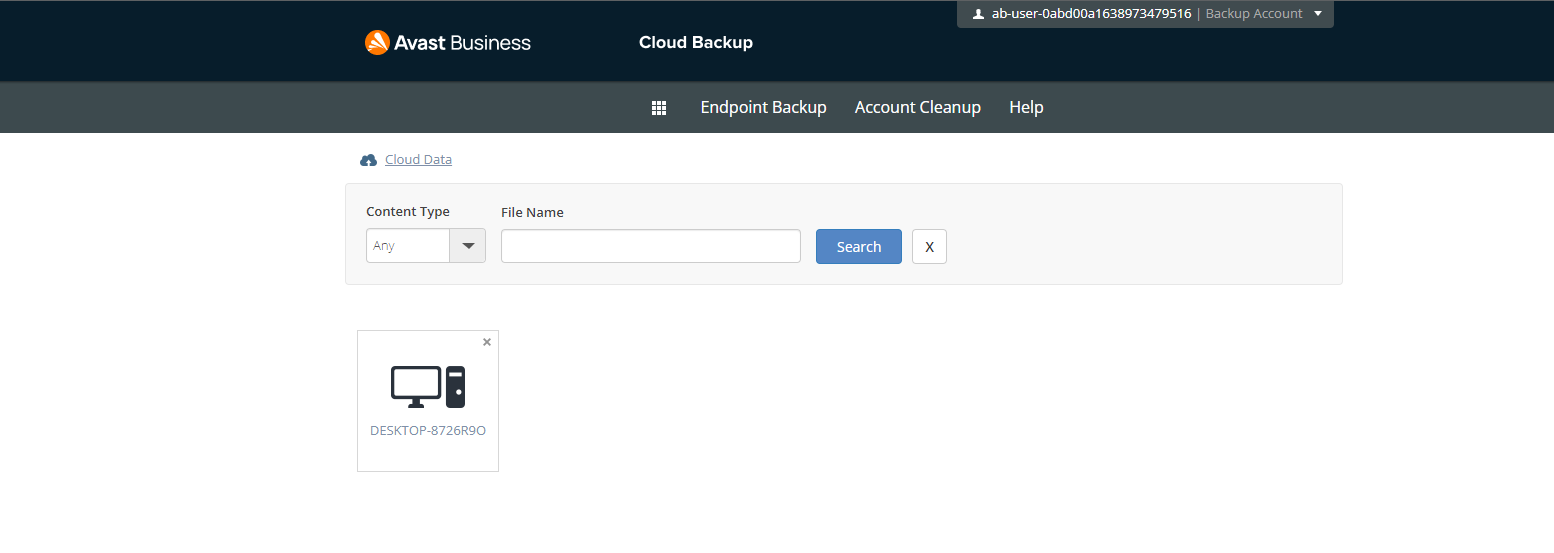
Managing Files and Folders
In the Cloud Data section, click on your device, then drill down into the backed up folder structure to get to the desired file or folder.
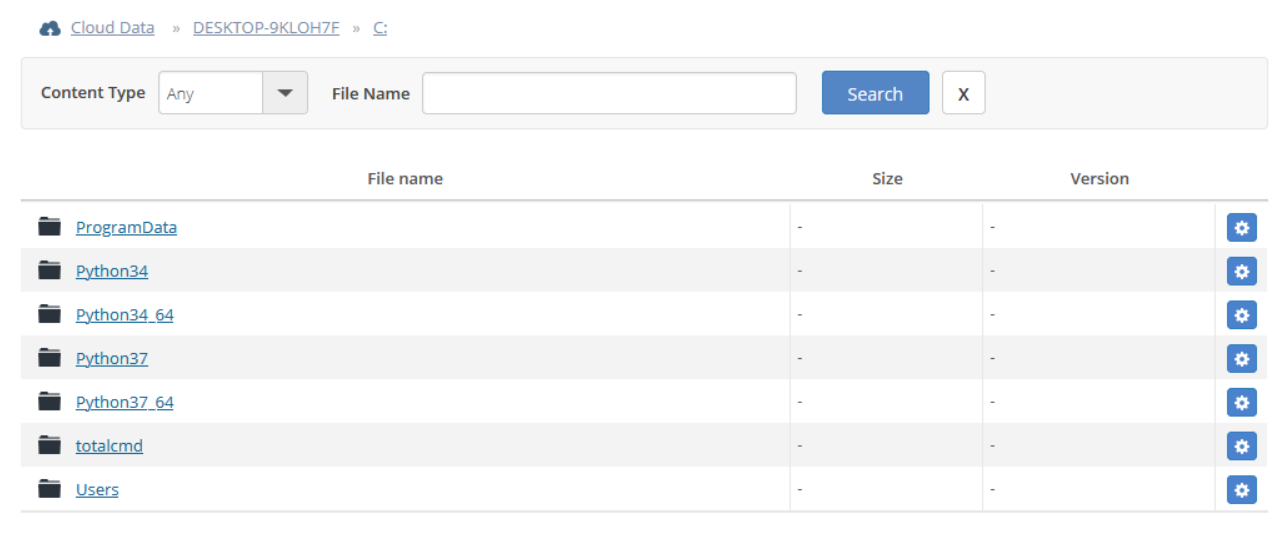
You can also quickly locate specific file content types or file names using the search options at the top.

To access folder options, click the gear icon next to the desired folder.

The following options are available:
 Download
Download
Download the whole folder in a zip archive, retaining the file/folder structure
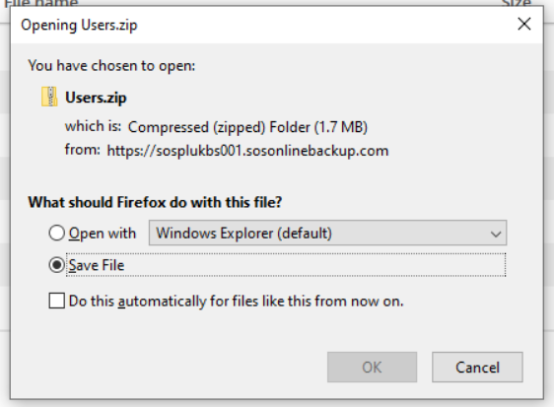
 Delete
Delete
Delete the folder and all subfolders/files from the cloud
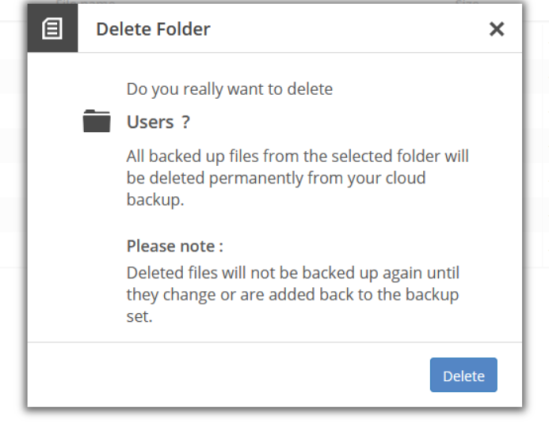
 Share
Share
Share the folder via email. You can edit the name, contact (recipient) name and email address, and the body of the message.
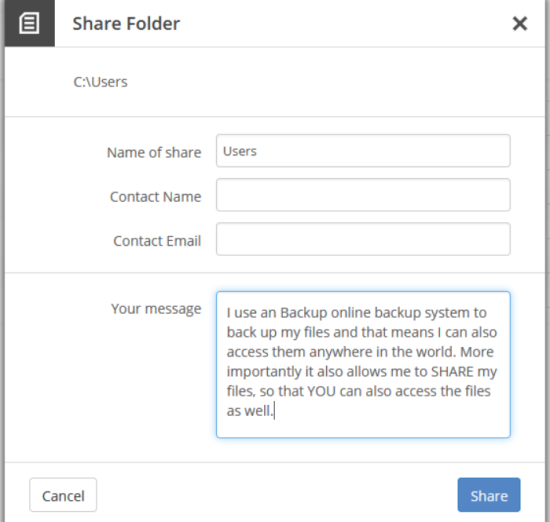
Once you have successfully shared the folder, the dashboard will notify you.

The sent email will contain a Click here link for downloading the zip archive of the shared folder.
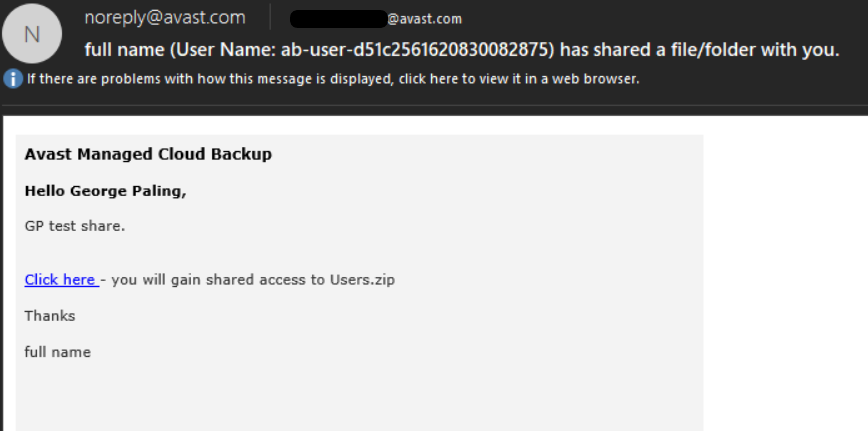
As with folders, you can download, delete, and share files, but also perform a remote recovery back to the device.
When a remote recovery is completed, the Recovery has succeeded notification will be displayed in the dashboard. If, however, the entered device name is incorrect, the recovery will fail with the Device is not found error.

In case of multiple versions of files, you can select the desired version by clicking on the link with the file date in the Version column, then selecting the required version from the drop-down menu.

Deleting All Data
Other than deleting data from the Cloud Backup dashboard individually, you can choose to delete the whole device's data via the X from the original page in the Cloud Data section.
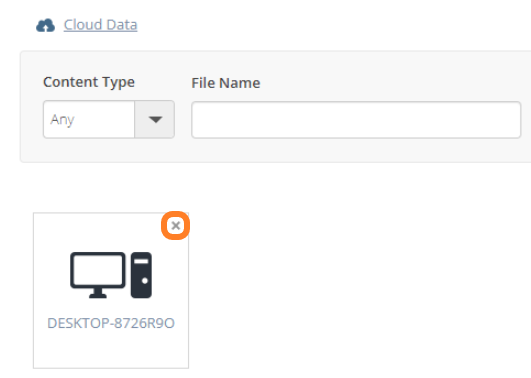
You will be asked to confirm the deletion, and you will be informed that the deleted data will not be backed up again until it changes or is added back.
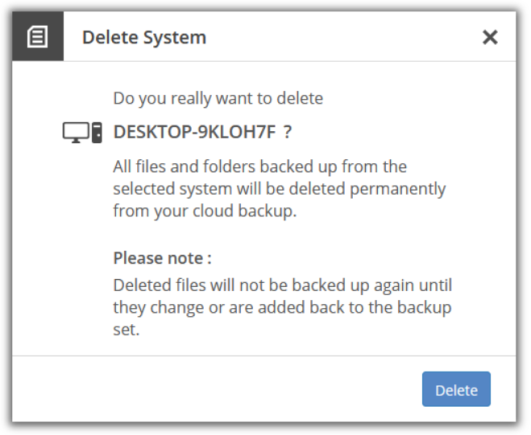
Other Dashboard Sections
Besides Cloud Data, the Cloud Backup dashboard offers several other useful sections and features to help you analyze and manage your backups. They can be accessed via the tabs at the top of the page:
 Home
Home
Under this tab, you can quick-search for a file (you will be brought to the Cloud Data section), view the usage stats, backup activity (selectable, to bring you to the backup history), backup size and file count, and additional device and backup details.
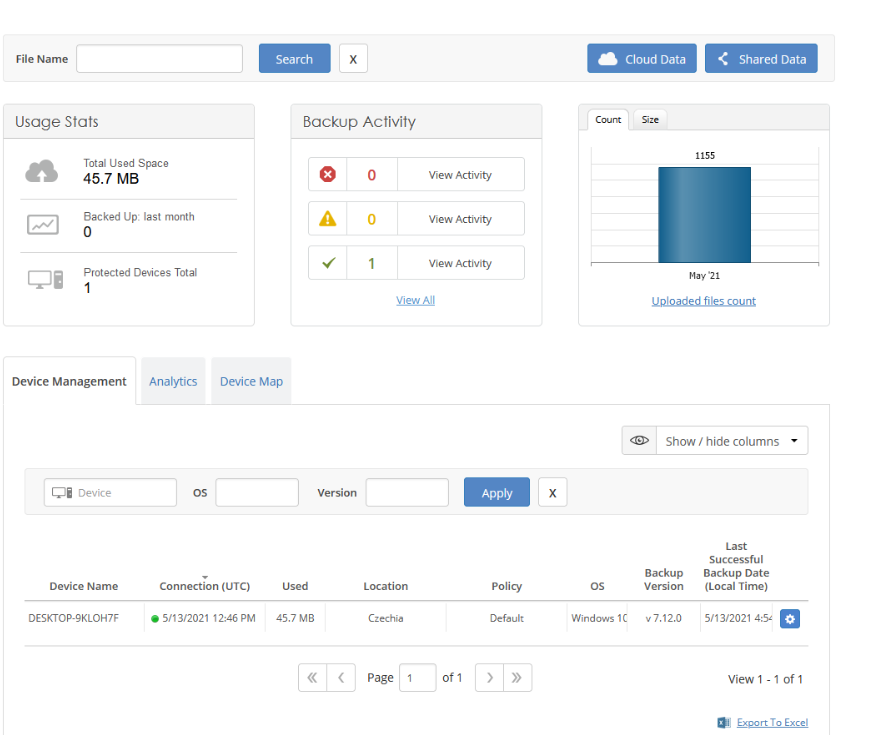
The Cloud Data button in the top right corner will bring you to the Cloud Data section, which has already been discussed above.
The Shared Data button lets you view and unshare any previously shared files/folders.

Under Device Management, you can see the device's details and, via the gear icon, download the backup logs directly from the device.
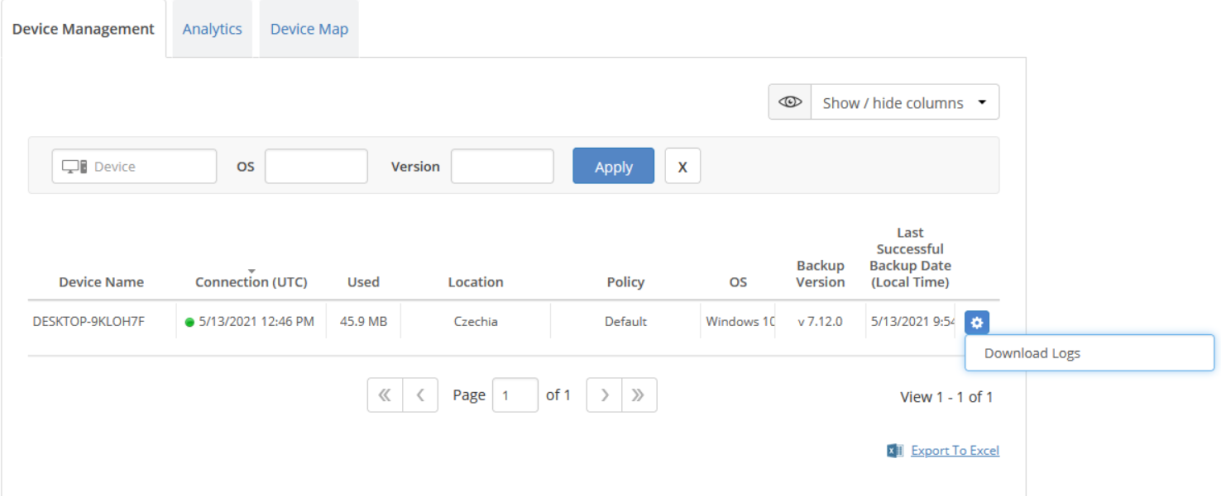
If the Download Logs command is successfully received by the backup client, you will be notified. The data will then be downloaded in the requestor's browser in a zip archive.

Under Analytics, user can see recent backups with a simple key for success/warning/failure, with an option to export to Excel.
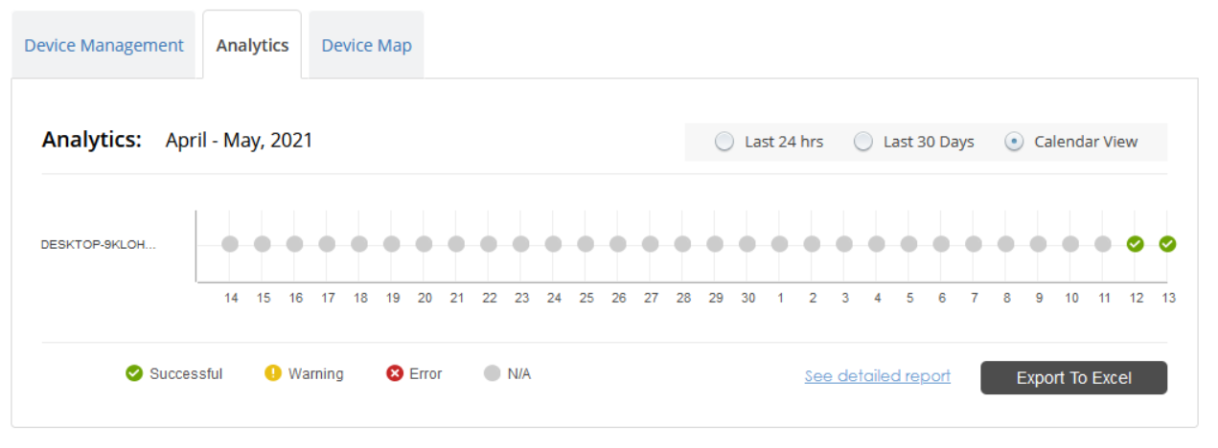
Under Device Map, you can view an approximate location of the device, usually relative to the DC in which the backup is stored.
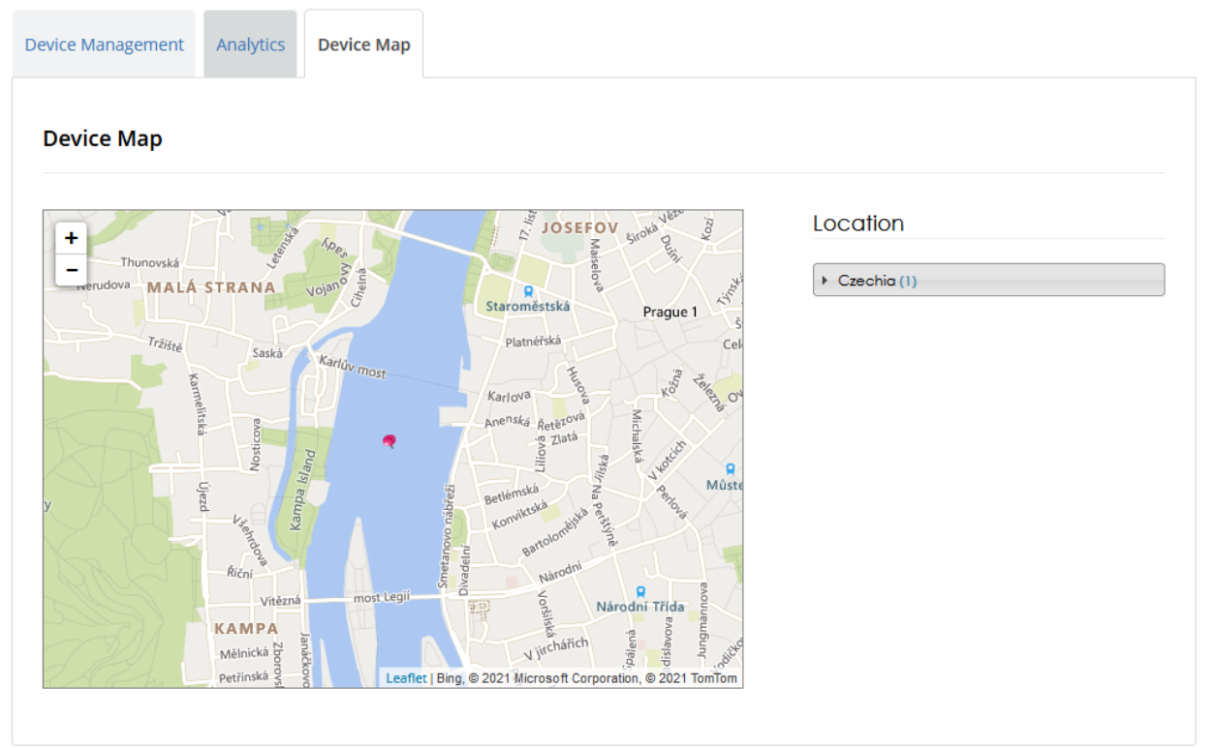
 Monitoring
Monitoring
This tab is divided into two sections:
- Endpoints Monitoring
- Backup History
In the Endpoints Monitoring section, you can see the device, its last backups, and last restore point.

In the Backup History section, you can see detailed information about the backups - the backup set (size), file count, unchanged files, files uploaded, failures, date/time, event (start, complete), duration, speed, and whether the backups were scheduled.
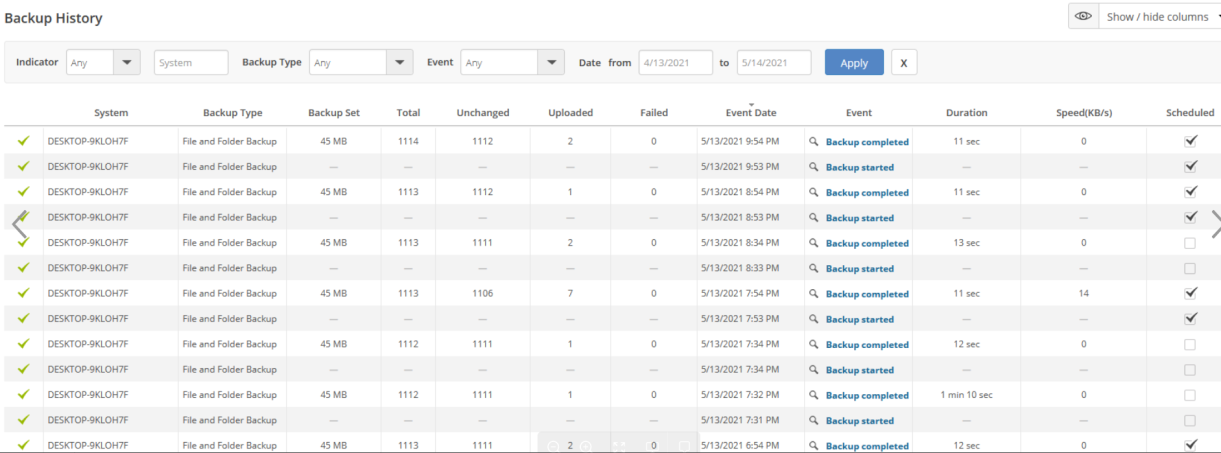
Selecting an entry in the Event column here will display detail of the backup - any failed files will be displayed here, so the user can view all the failures for this backup.
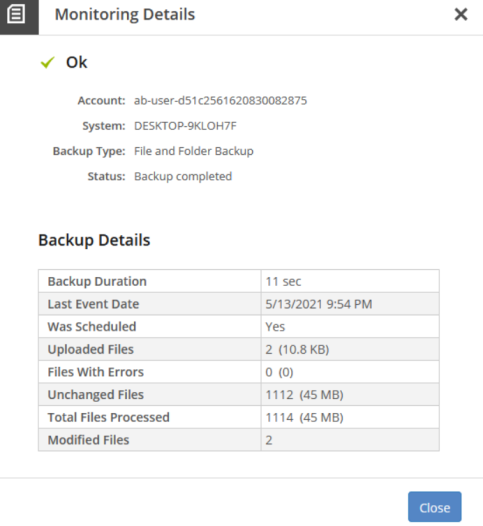
 Account Cleanup
Account Cleanup
Under this tab, you can delete files from the device based on when they have last been modified/backed up and what their file type is.
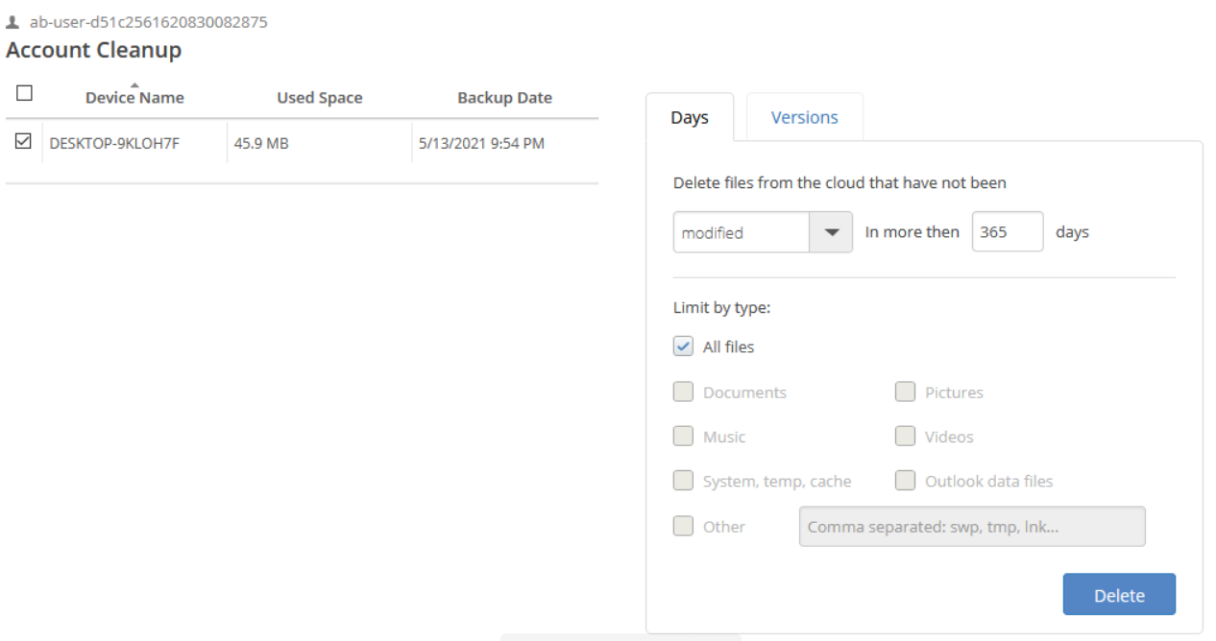
You can also specify how many recent versions of files or Exchange/SQL backup you want to keep.
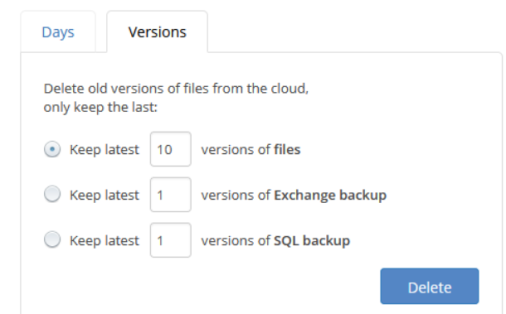
 Help
Help
This tab will link you to Avast Business Support.